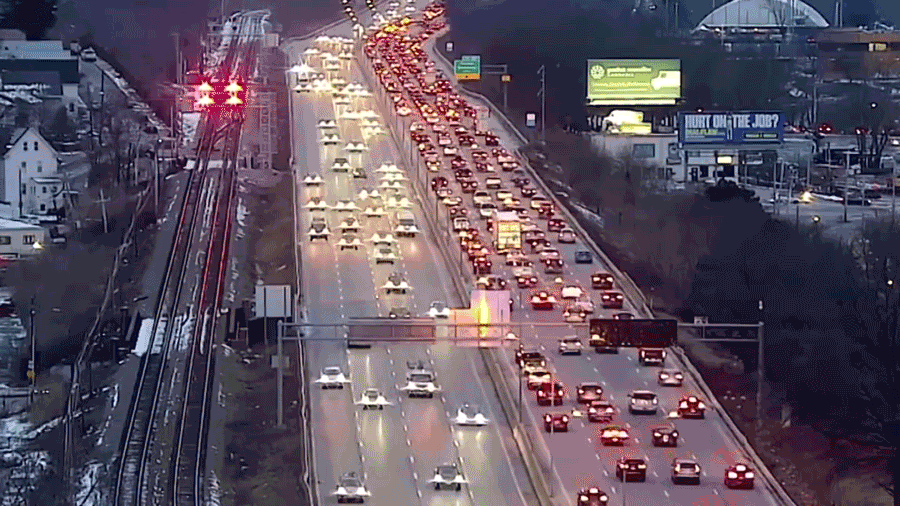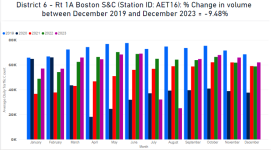This thread asks: what has changed in travel and commuting patterns pre- to post-pandemic? Ridership remains 60-70% what it was pre-Covid, and yet at the same time, traffic all across the city is worse than it's ever been. Why is this? I haven't really seen any satisfactory analyses of either problem. It's been long enough that there should be at least some early research and data on what commuter patterns and work patterns are going to look like in the future, and what impact WFH will have. What do we know at this point? But, what I really have not seen any good analyses on is: why is the traffic so bad? The only stories I've seen on this issue blame low-hanging fruit like the dysfunction of the T, but I'm not buying it. Surely, there is more to it than that... especially since the Commuter Rail has suffered far less than the subways have, so that should not explain the 30-40% drop in ridership if the number of cars has increased—even if we account for the fact that many CR riders change to a subway upon arrival at terminus.
Anyway, I would like to see this thread be a place be a place where people can share info and centers that are researching these issues, and opinions on why things are the way they are, and where they are going. I know there's another thread about the "crisis" in ridership but this is more broad, focusing on what is happening in the travel patterns today and how and why it differs from 2019 and before.
Anyway, I would like to see this thread be a place be a place where people can share info and centers that are researching these issues, and opinions on why things are the way they are, and where they are going. I know there's another thread about the "crisis" in ridership but this is more broad, focusing on what is happening in the travel patterns today and how and why it differs from 2019 and before.




